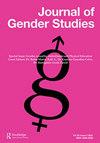疫情中的有形和无形工作:社会再生产和基本工作者的矛盾类别
IF 1.5
3区 社会学
Q2 SOCIAL ISSUES
引用次数: 0
摘要
女权主义学者和活动家长期以来一直在努力让人们看到主要由女性(通常是在家庭中)进行的基本但被忽视的社会再生产工作。这些辩论采纳了黑人女权主义对白人中产阶级女性经历最初优先次序的批评,发展成为一种更广泛的社会再生产理论,强调资本主义下多种形式压迫的关系性。新冠肺炎疫情及其封锁措施,暂时改变了有形和无形工作之间的传统分配,许多所谓的生产性工人被带回家,只留下最重要的工人在街上公开可见,并在网上受到重视。这些普遍低薪、经常被种族化和边缘化的工人突然出现,现在被编码为“必不可少”,突显了社会再生产工作的重要性。然而,基本工作者的类别是矛盾的,因为通过使某些形式的社会再生产变得明显,它继续掩盖了其他形式,特别是家庭护理工作和家务劳动。在这篇文章中,我们分析了基本工人这一矛盾的类别,并认为正如社会再生产理论所证明的那样,它证明了资本主义生产过程总是需要无形的劳动,即使一些以前看不见的形式变得越来越明显。[发件人]《性别研究杂志》版权归Routledge所有,未经版权持有人明确书面许可,不得将其内容复制或通过电子邮件发送到多个网站或发布到列表服务。但是,用户可以打印、下载或通过电子邮件发送文章供个人使用。这可能会被删节。对复印件的准确性不作任何保证。用户应参考材料的原始发布版本以获取完整信息。(版权适用于所有人。)本文章由计算机程序翻译,如有差异,请以英文原文为准。
Visible and invisible work in the pandemic: social reproduction and the ambivalent category of the essential worker
Feminist scholars and activists have long fought to make visible the fundamental but overlooked social reproduction work performed primarily by women, often in households. Taking on black feminist criticisms of the initial prioritization of the experience of white, middle-class women, these debates have developed into a broader social reproduction theory, which emphasizes the relationality of multiple forms of oppression under capitalism. The COVID-19 pandemic, with its lockdowns, temporarily turned the traditional distribution between visible and invisible work on its head when many so-called productive workers were ushered into their homes, leaving only the most essential workers publicly visible in the streets and valorized in online spaces. The sudden visibility of these generally low-paid, often racialized and marginalized workers now coded as ‘essential' highlighted the importance of the work of social reproduction. However, the category of essential workers was ambivalent, in that by making visible some forms of social reproduction it continued to obscure others, especially familial care work and housework. In this article we analyse the ambivalent category of the essential worker and argue that it exemplifies, as social reproduction theory attests, that the capitalist production process always requires invisible labour, even as some previously invisible forms become increasingly visible. [ FROM AUTHOR] Copyright of Journal of Gender Studies is the property of Routledge and its content may not be copied or emailed to multiple sites or posted to a listserv without the copyright holder's express written permission. However, users may print, download, or email articles for individual use. This may be abridged. No warranty is given about the accuracy of the copy. Users should refer to the original published version of the material for the full . (Copyright applies to all s.)
求助全文
通过发布文献求助,成功后即可免费获取论文全文。
去求助
来源期刊

Journal of Gender Studies
Multiple-
CiteScore
4.40
自引率
0.00%
发文量
52
期刊介绍:
The Journal of Gender Studies is an interdisciplinary journal which publishes articles relating to gender from a feminist perspective covering a wide range of subject areas including the Social and Natural Sciences, Arts and Popular Culture. Reviews of books and details of forthcoming conferences are also included. The Journal of Gender Studies seeks articles from international sources and aims to take account of a diversity of cultural backgrounds and differences in sexual orientation. It encourages contributions which focus on the experiences of both women and men and welcomes articles, written from a feminist perspective, relating to femininity and masculinity and to the social constructions of relationships between men and women.
 求助内容:
求助内容: 应助结果提醒方式:
应助结果提醒方式:


